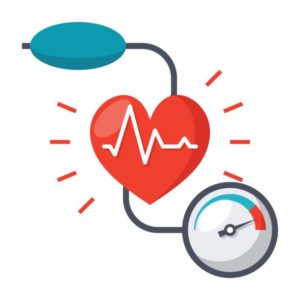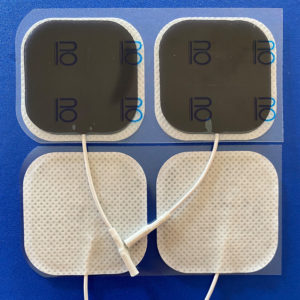The Importance Of Strength As We Age
Amy Bean
Thursday, June 9th, 2022
sarcopeniastrength trainingstrengthening
 Guest Blog written by Phoebe Cassedy, Musculoskeletal Physiotherapist and expert in strength and fitness in older adults.
Guest Blog written by Phoebe Cassedy, Musculoskeletal Physiotherapist and expert in strength and fitness in older adults.
Most of us know we should all be exercising regularly, probably more than most of us are! Some of us may even recall the recommended amount we should be doing: the UK Public Health Physical Activity Guidelines recommend that adults, and older adults are active daily, with either 150 minutes of moderate intensity activity, or 75 minutes of high or vigorous intensity activity (1). Moderate could be activities such as gardening, brisk walking, cycling (activities causing you to get a bit of short of breath but able to talk in full sentences). High or vigorous activities need to be more intense than this, including running or sports (enough to cause fast breathing and you shouldn’t be able to talk in full sentences). These are recommendations for all adults, including older adults and those living with chronic conditions.
Multiple Sclerosis
Amy Bean
Wednesday, May 25th, 2022

World MS day is the 30th May. The theme for 2022 (and 2023) is to build connections. Build connections to quality care, build connections to communities, both local and worldwide, and to build connections with yourself if you have MS.
To help support World MS Day, we wanted to provide a beginners guide to learning more about MS. What is it? How does it affect people? What treatment and management is available? and can Saebo help in anyway?
Foot Drop : Charlotte’s Journey
Amy Bean
Tuesday, March 29th, 2022

In June 2021, I suffered an L5/S1 disc herniation during a warm up at my dance fitness class. The disc compression resulted in right sided foot drop. Having always been a fairly active person and on the go mum of 2 this came as a bit of a shock. Not only was I dealing with the most severe pain I’d ever experienced, I now had something called foot drop which I knew nothing about. On discharge from hospital where I was first taken by ambulance, I remember being unable to put my shoe on and asking for assistance. My foot felt like it was being put in a shoe 2 sizes too small and felt very unpleasant. I also noticed that I couldn’t move my toes up and down. The first few days and weeks were awful as I couldn’t walk without my husband’s support. On the day I first saw my consultant, I had to walk in without my husband. I was so embarrassed as I struggled to walk across the reception. My consultant referred me for an MRI, which I had the following day, and arranged for me to see a Physio.
Know Your Blood Pressure
Glyn Blakey
Thursday, February 17th, 2022
blood pressurehypertensionknowyournumbers

How often should you record your blood pressure (BP) when you pass the grand old age of 40?
The NHS website has a section dedicated to hypertension which is a great starting point to learn more.
The NHS website advises that you should get your BP checked at least every 5 years once you reach the age of 40. The Stroke Association website advises all adults to check at least once every 5 years, preferably more often. In the UK alone there could be 5.5 million people living with untreated hypertension. We have over 100,000 strokes in the UK per year. When you think about the number of people living with untreated hypertension, this number of 100,000 strokes every year becomes more understandable.
Virtually Successful Conference
Amy Bean
Monday, January 31st, 2022
Saebo UK have been lucky enough to be part of the Virtually Successful Conference that took place last week, and we wanted to round up some of the highlights from this inaugural online conference on all things “TeleHealth”.
The Virtually Successful Conference was organised by the team behind the Remote Rehab online community. The Remote Rehab
Funding Sources
Amy Bean
Wednesday, May 12th, 2021
We often get asked for advice on how to source funding, if self funding isn’t an option. We also support NHS teams putting together business cases for equipment, either for their team to use, or for individuals. We therefore have put together this resource for funding options and support.
Stroke: How much practice should I do?
Amy Bean
Thursday, December 10th, 2020
A commonly asked question by stroke survivors is how much should I practice?, or how many times do I need to practice a movement or task every day.
Lang et al in 2009 states that practice is essential to motor learning following stroke and large doses of practice i.e. 100’s of daily repetitions for the arm and 1000’s for stepping, are required to produce lasting changes and learning.
The brain has a remarkable ability to reorganise itself after a neurological injury, by forming new connections when stimulated, challenged and exposed to new experiences and input. This ability to adapt is often referred to as Cortical Plasticity or Neuroplasticity interchangeably. For these changes to occur in the brain, such that the detrimental effects of the injury to the brain are altered, studies suggest 400-600 repetitions for movements of the arm. (Kleim 1998, Nudo 1996) .
Electrodes : Placement and Preparation
Amy Bean
Sunday, November 1st, 2020

This month’s Blog post will give you some handy tips and advice with using the electrodes for your electrical stimulation device. Our SaeboStim Pro is used in the electrode placement tutorial videos at the bottom of this page, but the principles apply to any electrical stimulation device.
Do check back on this blog as the video library will be added to over time. You can also Subscribe to our Saebo UK YouTube channel to keep up to date with our latest videos
Expanding CIMT (Constraint Induced Movement Therapy)
Amy Bean
Wednesday, September 16th, 2020

Guest blog written by Karen Leslie, Senior Neurological Physiotherapist at physio.co.uk

Constraint Induced Movement Therapy (“CIMT”) is an intensive course of rehabilitation for the arm and hand that is effective at improving the use of a weaker side following stroke. The programme is suitable for people with some movement present at the wrist and fingers, enough to crudely grasp a rag and let it go. Hand function is required because the therapy involves wearing a restrictive mitt on the unaffected hand for 90% of waking hours. If there is no ability to use the hand then this would completely disable the person and be of no benefit at all.
But what about people who cannot open their hands? Over the last few years researchers have been investigating whether “expanded CIMT” or “eCIMT” would be suitable for patients whose hands do not have enough movement to qualify for a CIMT programme.
An eCIMT programme involves the same intensity of treatment but without a constraint mitt. The principles of CIMT remain the same, looking at real-world use of the arm and practising specific tasks in an intensive repetitive manner, but the therapy sessions may use adjuncts such as orthotics or electrical stimulation to help position the hand to achieve a greater variety of tasks, and hands-on therapy to help manage muscle tone and body positioning. The primary outcome of any programme should be an increase in how much the person can use their arm in everyday life.
Spinal Cord Injury Case Study with the SaeboMAS and SaeboGlove
Amy Bean
Monday, August 24th, 2020

In this case study, written by Anna Wilkinson Physiotherapist and Managing Director of More Rehab, we describe the integration of the SaeboMAS and SaeboGlove in the rehabilitation journey of a 68 year old gentleman following a Spinal Cord Injury.
This gentleman was only able to use his upper limb in activities or exercises with hands on assistance from therapists or his care team. He was getting increasingly frustrated about the lack of chance to practice using his upper limbs and also the dependence of having someone else to physically assist him with every repetition.